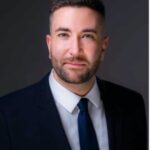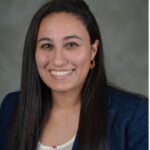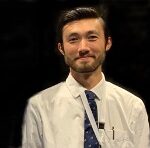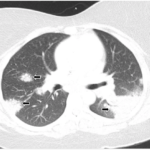Greater awareness and early detection of diseases from this event may slow the progression of these reactions. Further surveillance among individuals exposed to large quantities of fumes is needed to elucidate the relationship between Ground Zero exposure and granulomatous reactions.
 Branden Ireifej, MD, is a third-year postgraduate internal medicine resident at the Icahn School of Medicine at Mount Sinai, Elmhurst Hospital Center, New York City. He will soon begin his rheumatology fellowship at the University of Southern California, Los Angeles.
Branden Ireifej, MD, is a third-year postgraduate internal medicine resident at the Icahn School of Medicine at Mount Sinai, Elmhurst Hospital Center, New York City. He will soon begin his rheumatology fellowship at the University of Southern California, Los Angeles.
 Lea Meir, MD, is a completing her fellowship in rheumatology at the Icahn School of Medicine at Mount Sinai, New York City.
Lea Meir, MD, is a completing her fellowship in rheumatology at the Icahn School of Medicine at Mount Sinai, New York City.
 Emily Gutowski, MD, is a third-year postgraduate internal medicine resident at the Icahn School of Medicine at Mount Sinai, New York City.
Emily Gutowski, MD, is a third-year postgraduate internal medicine resident at the Icahn School of Medicine at Mount Sinai, New York City.
 Hanson Lam, MD, is a pathologist in the Department of Pathology, Icahn School of Medicine at Mount Sinai, New York City.
Hanson Lam, MD, is a pathologist in the Department of Pathology, Icahn School of Medicine at Mount Sinai, New York City.
 Wei Wei Chi, MD, is an associate professor in the Department of Rheumatology, Icahn School of Medicine at Mount Sinai, New York City.
Wei Wei Chi, MD, is an associate professor in the Department of Rheumatology, Icahn School of Medicine at Mount Sinai, New York City.
References
- Grady D. Lung function of 9/11 rescuers fell, study finds. The New York Times. 2010 Apr 7. https://www.nytimes.com/2010/04/08/nyregion/08lung.html.
- Lippmann M, Cohen MD, Chen LC. Health effects of World Trade Center (WTC) dust: An unprecedented disaster’s inadequate risk management. Crit Rev Toxicol. 2015 Jul;45(6):492–530.
- Srivastava A, Lauwers GY. Pathology of non-infective gastritis. Histopathology. 2007 Jan;50(1):15–29.


